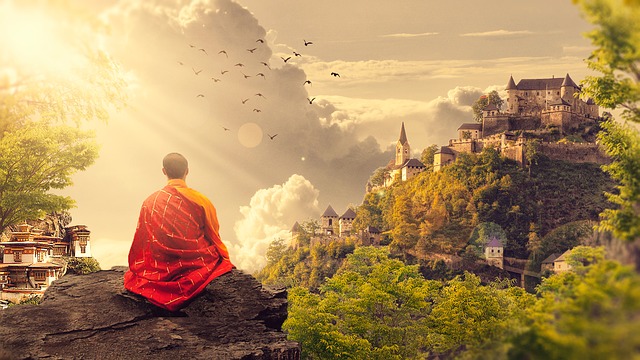How do you deal with the fact that there are over seven billion people on this planet?
The U.S. Census Bureau estimated that in 500 C.E. or so, after the fall of Rome, there were about 200 million people on Earth.
It wasn’t until somewhere around 1805 C.E. that the human population reached the one billion mark. Now, we’re at seven billion. Humans are clearly changing everything, not only our numbers, but the face of the Earth and the way we relate to our world and other people.
How do you think about this? Does it overwhelm you? Seven billion is a huge number to think about.
To embrace all of your life would mean embracing the vastness of humanity. And to open up to that much reality can seem, at first, overwhelming. It would mean embracing vast differences, including people who suffer from living with little food, water, or medical care, and refugees displaced from their homes. It would mean embracing those who live by love and compassion as well as those who are driven by greed, lust, or a craving for power. Can you open to all that?
The mind too easily closes itself off and tries to gain a sense of security and permanence by creating concepts of how the world works that seem set and stable. For example, for most of human existence, we have created concepts of dualities, an in-group vs. out-group, friends vs. enemies, graced vs. damned. But I think it’s time for humanity to grow up.
I realize it’s necessary to know what is dangerous and hurtful in order to decide what is safe and pleasurable. The problem is when you create an identity out of a not. I am not this or not that. You think of yourself, for example, as the not-a-liar, so you carry the feel of a lie in your heart. The not becomes a boundary you use to wall away from your awareness—not only others, but parts of yourself.
Differences do not have to be walls. As the philosopher Ken Wilber said in his book No Boundary: Eastern and Western Approaches to Personal Growth, each boundary is also a point of contact. We have skin not only to protect ourselves, but to touch others. When you create an identity of dueling circles, you are not one of the circles, but both. When you form an identity based on opposing something, what happens if you no longer have what you oppose? Who you are is always deeper than who you’re not. In fact, who you are always exceeds any one identity or concept.
And in order to feel the reality of this, not just think it, you might practice a new twist to an old and reliable compassion meditation.
Close your eyes and focus for a moment on your breath. Simply breathe in—and breathe out. As you breathe in, notice what happens. Notice how your body expands as you inhale. And when you exhale, notice your body let go. Pick one part of your body, like your shoulders, and feel the area around your shoulders expand as you inhale. And as you exhale, notice your body let go, settle down. Tension drains away and you relax.
Now, picture in your mind where you are now. If you’re in a room, what do you see? Do you see the walls, the colors, any furniture? Then feel the floor and the seat you are on, and notice the other people in the room. Notice each one, each face. Each is one distinct person. If you’re outside, see, feel, and hear the place you inhabit and the people, if there are any nearby. Then draw back a little and change your perspective, maybe look down on your previous space. Notice what is there and who is there with you.
Then imagine some other place nearby. If you’re in a city, imagine some place rural you know. Imagine not just the physical details, but the people. Visualize people laughing, crying, as well as going about their business. Feel the fact that each of the people you imagine has feelings, drives, and loves like you do. Then go to another nation and imagine people passing by on a city street. See one face, then another. Then go across the world and do the same. Imagine all kinds of people there, of all ages, genders, colors, and religions. Each has feelings, like you do. They have worries, like you do. They love and care for others, like you do.
Just sit for a moment, calm and relaxed, and feel all the people you meet in this world, even those in a crowd, are distinct beings, with a home, a private space, hopefully—like you.
You could also go in what might appear as the opposite direction, from looking to others to looking for yourself. Calmly sit up, close your eyes partly or fully, and simply feel the breath. Feel yourself breathe out and breathe in. And notice whatever arises, including thoughts and sensations. Let whatever arises in—and let it go.
Put your attention on your upper lip. Can you feel the air passing over your lip? Can you feel the point in the breath where there is the most stillness? Can you hear the silence between the sounds? In that place of silence, neither “I” nor “you” stands out, only whatever arises, only all. In that place, everything is embraced. Sit for a moment with the feeling that you can embrace all that arises.
We are all more alike than different. What one person feels, another can share. Our boundaries are more fluid than many of us acknowledge. There are seven billion of us. We need to embrace and learn to live with that reality.
~
~
~
Author: Ira Rabois
Image: Pixabay
Editor: Travis May
Copy Editor: Nicole Cameron
Social Editor: Travis May

 Share on bsky
Share on bsky







Read 1 comment and reply